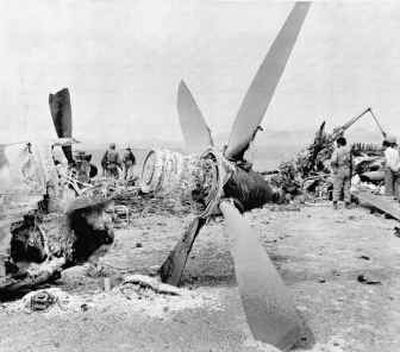Hostage rescue attempt relevant 25 years later

A desperate mission to rescue 53 American hostages from Iran ended in failure and the deaths of eight servicemen, but it is being remembered 25 years later as a turning point for U.S. special forces that eventually led to successes in Afghanistan, Iraq, Kosovo and elsewhere.
Army, Navy, Marine Corps and Air Force veterans of Operation Eagle Claw, families of those who lost their lives and a support group are gathering in Florida this weekend for an anniversary remembrance.
Mere failure turned into fiery disaster when a helicopter collided with a transport plane at Desert One, a desolate rendezvous spot in Iran, after mechanical and weather problems had already aborted the mission.
What happened on April 25, 1980, shocked the Pentagon and Congress into building up special forces for clandestine missions and small-scale warfare against terrorists and guerrillas.
“The U.S. got better prepared to deal with terrorism quicker because of Desert One,” retired Air Force Col. Roland Guidry said in recent interview.
He was a squadron commander at Desert One and later served as chief of air operations for the U.S. Special Operations Command, now headquartered at MacDill Air Force Base near Tampa, Fla.
Organizational, logistical and equipment flaws coupled with interservice rivalry contributed to Eagle Claw’s failure, but the audacious rescue plan and training that went into it still are paying dividends.
“There’s a lot of missions that are occurring in Iraq and Afghanistan we don’t know anything about, but they’re using some of the same tactics and procedures we developed,” Guidry said.
Guidry, 65, now a real estate broker in Destin, Fla., will be the principal speaker at an Eagle Claw symposium Monday, the mission’s anniversary date, at Hurlburt Field near Fort Walton Beach, Fla.
Hurlburt is headquarters for the Air Force Special Operations Command, and it was the home base of five airmen who died at Desert One. Three Marines also were killed.
Tonight, the Tampa-based Special Operations Warrior Foundation will hold a 25th anniversary dinner and remembrance in Fort Walton Beach. The foundation provides college scholarships for children of special operators killed or disabled in the line of duty.
Jody Powell, then-President Jimmy Carter’s press secretary, will be master of ceremonies. Carter’s inability to free the hostages was an issue in his 1980 re-election defeat.
The crisis began Nov. 4, 1979, when a mob seized the U.S. embassy in Tehran. One hostage was freed because of illness after the rescue attempt. The other 52 were released as President Ronald Reagan was being inaugurated in 1981.
Eagle Claw was aborted after mechanical problems disabled two of the eight Navy and Marine helicopters and a third turned back in the face of a dust storm. The five remaining helicopters were one short of the minimum needed to continue.
Six Air Force transports had flown in Army Delta Force troops and fuel for the helicopters, which were supposed to take the soldiers to a clandestine staging area near Tehran. The mission never got that far.
“I honestly don’t feel we had much of a chance to complete the mission,” said Wade Ishimoto, a Delta Force intelligence officer at Desert One and now a senior adviser for special operations at the Pentagon.
“So you look at me and say ‘Why did you go?’ ” Ishimoto said. “Well, because I was a soldier and the commander in chief, the president, said go.”
After the abort order, one helicopter tried to leave Desert One in a cloud of dust but crashed into a parked C-130 cargo plane loaded with 44 Delta troops.
“We didn’t hear anything. We just felt sort of a jar,” said retired Air Force Staff Sgt. J.J. Beyers, a radio operator in the C-130’s cockpit where five other airmen died. “We thought we might have been shelled or something. It never occurred to us what happened.”
Beyers, 62, suffered severe burns and was forced to retire.
The transports had taken off from Misirah, an island off Oman. When they returned, British airfield workers sent over two cases of cold beer.
One case had a message scrawled on it. That piece of cardboard, displayed in a frame at Hurlburt, reads:
“To you all from us all for having the guts to try.”